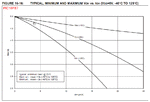McFly123
Newbie level 6

We're using PIC18f4550 and we need to drive an ultrasonic sensor which needs 5V trigger to its Trig pin, but our PIC outputs only 2.57V.
//initialization
RD0_BIT = 1, // this only sends 2.57V to the ultrasonic sensor.
Delay_us(10);
RD0_BIT = 0;
.......
please help
//initialization
RD0_BIT = 1, // this only sends 2.57V to the ultrasonic sensor.
Delay_us(10);
RD0_BIT = 0;
.......
please help






